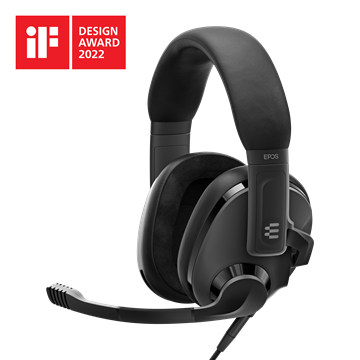
H3
Wired Closed Acoustic Gaming Headset
We have decided to gradually wind down our Gaming headset portfolio during 2024 to increase focus on Enterprise Solutions business.
We will continue to sell Gaming products during 2024 and our customer support will continue unchanged. The warranty on our products is not affected.
While EPOS is primarily known as a company that designs and manufactures high quality audio hardware, part of our secret recipe is the software that supports it.
Need help? Check out Product Support Articles, find a relevant Product Support Page or Contact us!